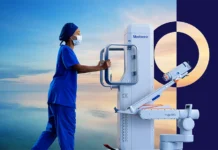Synthetic control arms (SCAs) are becoming an increasingly popular method in clinical trials. While this technique can be applied in any clinical research where relevant, it is particularly popular in fields like pharmaceuticals and oncology.
In fact, data shows that over a quarter (28%) of drug trials utilize SCAa, followed by studies for genetic disorders (14%) and infectious diseases (11%).┬Ā
There are several reasons a synthetic control arm may be used during a clinical trial, and there are some key benefits to choosing this methodology. In this guide, we’re going to build a deeper understanding of SCAs and their application in clinical trials.┬Ā
What are synthetic control arms (SCAs)?
A synthetic control arm is a type of control group created by gathering and drawing on existing data rather than recruiting new patients. This information could be constructed from historical data, real-world data (RWD) or data from previous trials, such as:
- Previous clinical trials that studied similar patient populations
- Observational studies from databases and patient registries
- Electronic health records (EHRs) and insurance claims data
Researchers use these synthetic groups as a way of reflecting the suspected outcome of a treatment (based on existing data) rather than assigning new patients to a placebo or standard-treatment group. This reduces the need for a control group in the study.
Not only this, but it means that researchers can run trials that focus on the treatment’s effects without needing to withhold experimental treatments from patients who genuinely need them. But we’ll look at this and other benefits in more detail later in the guide.┬Ā
How are synthetic central arms created?
Now we understand where the data comes from, but how are SCAs actually created?┬Ā
Well, the process requires a rigorous and methodical approach. One of the most important steps is ensuring that the data is comparable to that of a conventional control group. With that in mind, the process typically looks like this:
1. Defining the patient population – The first step is to select a population from existing data sources. This group must closely match the inclusion and exclusion criteria of the current clinical trial.
2. Data collection and curation – The data must then be collected from multiple sources, such as prior studies and any of the other relevant sources we mentioned above, in order to create a representative synthetic control group.┬Ā
3. Data matching ŌłÆ It is then time to apply statistical techniques, such as propensity score matching. This ensures that the synthetic control patients closely resemble the trial’s experimental group. For example, they are the right demographics, disease severity and other important factors for the study.┬Ā
4. Outcome adjustment – The data must be adjusted for potential confounding factors to ensure comparability between the synthetic control arm and the trial’s experimental group.
5. Validation ŌłÆ The final step is to validate the synthetic control arm by comparing it to conventional controls from similar past studies. This is done to ensure the outcomes are as credible as possible and that the best results are achieved.
Why use synthetic control arms?┬Ā
There are several key reasons why researchers might choose synthetic control arms during a clinical trial, and some of the top benefits include:┬Ā
Reducing the need for patient recruitment┬Ā
There are some areas, like oncology or rare diseases, where recruiting patients can be difficult, or patients may be unwilling to participate if there’s a chance of being placed in a placebo group. In these cases, SCAs can be hugely beneficial and enable the trial to go ahead.┬Ā
Ethical considerations
Similarly, for some conditions, denying patients access to potentially life-saving experimental treatments can raise ethical concerns. So, even if the patients are willing to participate and roll the dice on which group they’ll be placed in, the researchers would have to choose a placebo group, and this could potentially cost lives.┬Ā
Increasing cost and time efficiency
Synthetic control arms can significantly reduce the amount of time, resources and money needed to run a trial, as fewer patients need to be recruited and monitored. This can make producing new treatments, medications or interventions much more time and cost-effective.┬Ā
The limitations and challenges of using SCAs
While synthetic control arms can be hugely beneficial for the reasons we’ve outlined above, this methodology is not without its challenges. There are some limitations to choosing this technique, and these include:┬Ā
- Relying on the availability and quality of historical data, as this may not always align perfectly with the current trial population.
- Synthetic controls can introduce bias to the study of the data sources do not accurately represent real-world outcomes
- Regulatory acceptance is still evolving, and synthetic control arms may face a lot of scrutiny in high-stakes trials, especially those that raise ethical questions ŌĆō but more on this in the final section.
Regulatory considerations and challenges of SCAs
As with any clinical trial, regulatory bodies are involved, and these will have their own strict guidelines on the use of synthetic control arms. The challenges in regulatory approval for SCAs are often related to data integrity and the methodologies used to match synthetic controls with experimental patients.
However, the rules, regulations and requirements are still evolving, and some key regulatory considerations must be made. These include:┬Ā
Data quality and transparency
Regulators emphasize the importance of high-quality, transparent data sources in any clinical trial. This is something that can be challenging when gathering and analyzing past data from different sources in order to create the synthetic control arm.┬Ā
Validation
Regulators require that SCAs be validated against actual control groups. This is done to confirm that the synthetic control arms behave similarly to traditional controls. If the data is not validated correctly or to the highest standard, this can impact the legitimacy and results of the trial.┬Ā
Standardisation
As synthetic control arms become more common, there is an increasing call to standardize these methods. This is particularly important in high-stakes areas like drug approvals or treatments for rare diseases.


















